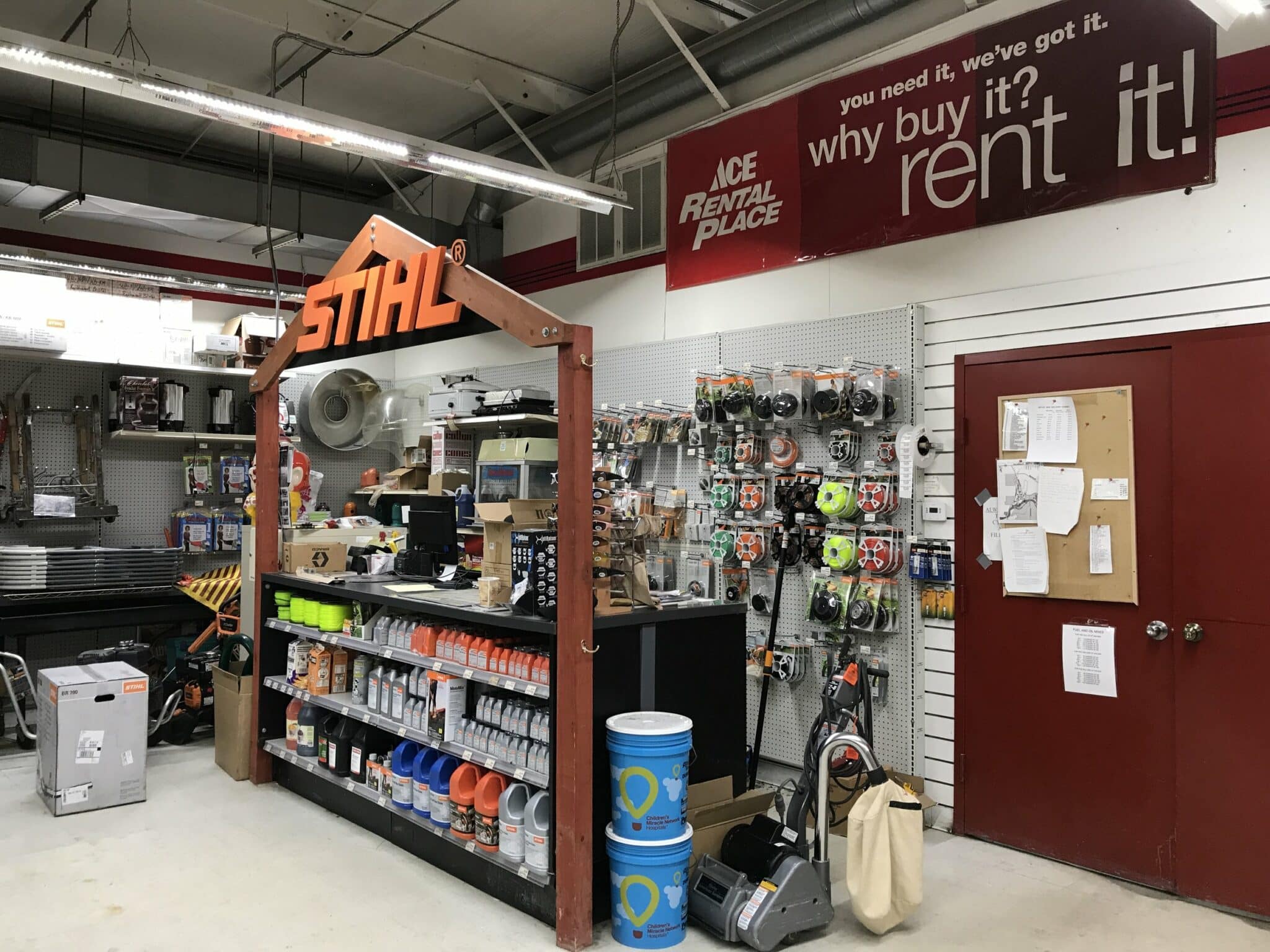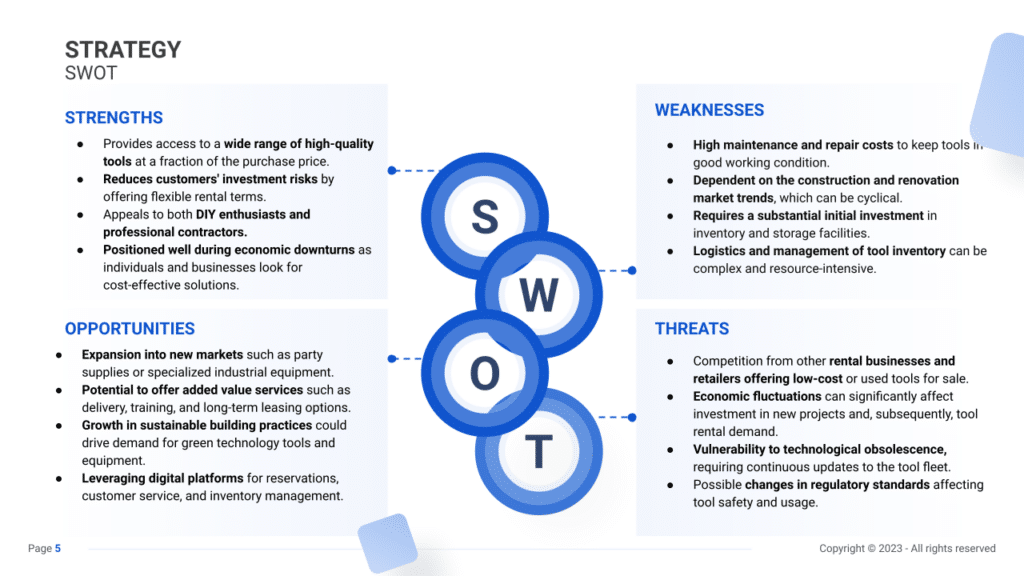SWOT Analysis for a Tools Rental Business (Example)

A SWOT analysis is crucial for developing a business plan for a tools rental business. This analysis, which stands for Strengths, Weaknesses, Opportunities, and Threats, helps understand internal and external factors that can impact your business. Strengths and weaknesses are internal to the business, while opportunities and threats are external.
In this article, we will explore various examples of strengths, weaknesses, opportunities, and threats, aiding owners in shaping effective business strategies and informed decision-making for sustained growth.

Strengths
Highlight the strengths that differentiate your tool rental business, fostering customer satisfaction and loyalty.
- Diverse Tool Inventory: Offering an extensive range of tools for various purposes can attract a broad customer base.
- Example: Highlight the diversity of tools available for rent through online catalogs and in-store displays.
- Expert Staff Knowledge: Having knowledgeable staff capable of offering advice on tool selection and usage.
- Example: Conduct training programs to ensure the staff is well-versed with the tools, allowing them to provide valuable guidance to customers.
- Prime Location: A convenient location, perhaps near construction zones or DIY stores, can drive customer traffic.
- Example: Utilize signage and online maps to showcase the accessibility of the rental store.
- Online Presence and Booking: Offering an online platform for reservations and inquiries can enhance customer convenience.
- Example: Develop a user-friendly website or mobile app for seamless tool reservations and information dissemination.
Weaknesses
Address weaknesses that might hinder the tools rental business’s growth and success.
- Limited Brand Recognition: A lack of brand recognition compared to larger chain rental companies.
- Example: Implement a marketing strategy that emphasizes personalized service and high-quality tools to build a strong local reputation.
- Maintenance Challenges: Ensuring the upkeep and maintenance of a wide array of tools can be resource-intensive.
- Example: Establish a comprehensive maintenance schedule to uphold the quality and longevity of the tools.
- Seasonal Demand: Fluctuations in demand based on seasons or specific projects may affect consistent revenue.
- Example: Diversify services by offering seasonal discounts or expanding into related industries like party equipment rental during slow periods.
- Technology Integration: Insufficient technological integration might lead to inefficiencies in managing inventory and bookings.
- Example: Invest in rental management software to streamline operations and enhance the customer experience.
Opportunities
Identify opportunities for growth and expansion within the tools rental business.
- Home Improvement Trend: The surge in DIY home improvement projects presents an opportunity for increased tool rental.
- Example: Create targeted marketing campaigns to engage DIY enthusiasts and homeowners embarking on renovation projects.
- Green Initiatives and Sustainability: Offering eco-friendly tools or participating in sustainability initiatives can attract environmentally conscious consumers.
- Example: Introduce a range of energy-efficient or eco-friendly tools, highlighting their benefits in reducing environmental impact.
- Partnerships with Contractors: Collaborating with local contractors for bulk tool rentals or as a recommended rental service can expand the customer base.
- Example: Forge partnerships with construction companies, offering them special rates for repeated rentals.
- Online Education and DIY Tutorials: Providing online resources and tutorials on tool usage and DIY projects can attract and retain customers.
- Example: Create instructional videos or blogs showcasing tool functionalities and usage tips.
Threats
Anticipate threats that may pose challenges to the tools rental business.
- Economic Downturns: Economic uncertainties can lead to decreased construction and renovation activities, impacting rental demand.
- Example: Offer flexible rental terms or discounted packages during economic downturns to attract customers.
- Competition from Big Box Stores: Larger retail chains offering tool rental services might pose significant competition.
- Example: Emphasize the quality of service, personalized assistance, and niche tool selection compared to larger chains.
- Regulatory Changes: Changes in regulations regarding safety standards for tools or rental operations can impact business practices.
- Example: Stay updated with regulatory requirements and ensure strict compliance to avoid legal repercussions.
- Online Retail Expansion: The growth of online retail platforms offering tool sales might influence rental demand.
- Example: Focus on the convenience, cost-effectiveness, and flexibility of rentals compared to outright purchases.





